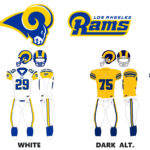The uniforms of the Soviet armed forces during World War II are often perceived as monolithic blocks of color. However, delving deeper into the historical context reveals a far more nuanced picture, especially when considering units like the NKVD (People’s Commissariat for Internal Affairs). While meticulous color accuracy might seem paramount, the reality of wartime production and resource management led to significant variations, particularly in the shades worn by NKVD personnel.
Wartime Production and the Spectrum of Soviet Uniform Colors
The initial German invasion in 1941, Operation Barbarossa, inflicted massive losses on the Soviet Union, both in manpower and materiel. The rapid Axis advance necessitated the relocation of vital industries eastward, a monumental undertaking that, while safeguarding production capacity, disrupted established processes, including the consistent manufacturing of dyes for uniforms. In a nation mobilized for total war, the priority shifted decisively towards quantity over meticulous detail. Was the precise shade of green more crucial, or the availability of trousers for the millions conscripted? This pragmatic approach resulted in Soviet uniforms being produced in a wide array of hues throughout the war.
The regulation color for Soviet uniforms was intended to be a greenish shade, often approximated to Vallejo 880 in modern modeling paints. However, the pressures of wartime production, coupled with factors like dye availability and textile quality, meant that uniforms emerged in a spectrum of greens, and even drifted towards brownish and yellowish tones. Sun-fading and field conditions further contributed to this diverse palette. It’s important to remember the sheer scale of the Soviet war effort. With an estimated 30-40 million individuals serving between 1941 and 1945, the logistical challenge of uniforming such a vast army was immense. Producing millions of uniform sets annually inevitably led to compromises in color consistency.
NKVD Uniforms: Practicality and Command Structure
The NKVD, while part of the Soviet military structure, encompassed a diverse range of functions, from border troops and internal security to secret police operations. In terms of uniforming, NKVD personnel, including border guards and internal troops, would have been subject to the same wartime production realities as the Red Army. Therefore, expecting uniform color consistency across all NKVD units would be historically inaccurate. Rank-and-file NKVD soldiers would have been issued uniforms from the same supply chains as other Soviet troops, experiencing the same variations in color and material.
While anecdotes suggest the myth of poorly supplied Soviet soldiers, historical evidence and even captured German accounts indicate that Soviet forces were generally adequately equipped, particularly with essentials like warm winter clothing – often superior to German provisions. However, quality variations, especially in non-essential aspects like dye consistency, were a direct consequence of wartime exigencies.
For NKVD officers, the situation might have differed slightly. Within the Soviet system, access to better quality supplies and stricter adherence to regulations often correlated with rank and political influence. Officers, including those in the NKVD, likely had a greater chance of obtaining uniforms closer to the intended color standard and of better overall quality, reflecting their position within the hierarchy. Nevertheless, even officer uniforms would not have been immune to the broader trends of wartime production variability.
Historical Accuracy and Uniform Representation
For those seeking historical accuracy in depicting Nkvd Uniforms, whether in modeling, historical reenactment, or artistic representation, embracing color variation is key. Representing NKVD uniforms in slightly different shades of green and brown can enhance historical authenticity, reflecting the realities of wartime Soviet uniform production. Unless depicting high-ranking officers in parade dress, striving for absolute color uniformity is less historically accurate than acknowledging the inherent variations of the period. The focus should remain on capturing the overall impression of the NKVD uniform within the context of the Eastern Front, where practicality and availability often outweighed strict adherence to color charts.

